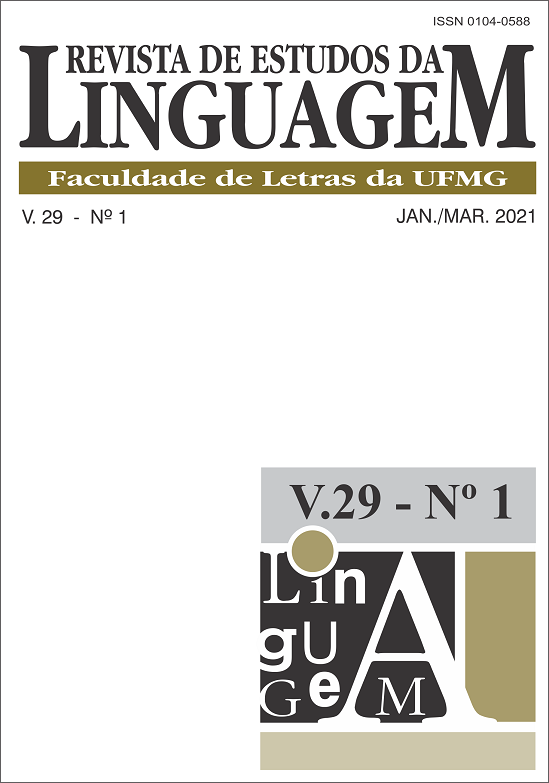Formalization of the perception of the nasalized low vowel in Spanish in the light of the BiPhon model
a comparative study of grammar fragments of Spanish native speakers and Brazilian students learning Spanish as a foreign language
DOI:
https://doi.org/10.17851/2237-2083.29.1.13-48Keywords:
perception, vowel nasalization in Spanish, BiPhon modelAbstract
A formal perspective is the focus of this paper, which aims to discuss and represent the perception of nasalization of vowel /a/ in certain nasal contexts, a phenomenon of allophony in Spanish, which can be either phonological or allophonic in Portuguese. Empirical support is based on data from 9 native speakers from Montevideo, Uruguay, and 15 Brazilian learners of Spanish as a second language. Perception data, taken from studies carried out by Brisolara and Matzenauer (2018a, 2018b), were obtained by an Identification Test, which was run by the TP software program (RAUBER et al., 2012). The fact that the Uruguayan have lower accuracy than the Brazilian to identify nasalized vowels is attributed to the strict allophonic nature of the phenomenon in Spanish. It was captured and formalized by the Bidirectional Processing and Grammar Model – BiPhon (BOERSMA, 2006, 2007; BOERSMA; HAMANN, 2009), which integrates the Stochastic Optimality Theory. Since perception, according to BiPhon, has the role of mapping continuous phonetic representation to a discrete phonological surface structure, the phenomenon related to the perception of nasalization of the vowel /a/ in Spanish was formalized in a way that represented, through the interaction between Cue Constraints and Structural Constraints, the difference between grammars of Brazilian Spanish learners and of Uruguayans: the weight of the *VORALN and *Vnasal Structural Constraints was decisive in specifying both grammars, and the proximity of the central values of the Structural and Cue Constraints represented the presence of variation in the perception data of the Uruguayan and the Brazilian.




 Esta obra está licenciada com uma Licença
Esta obra está licenciada com uma Licença 